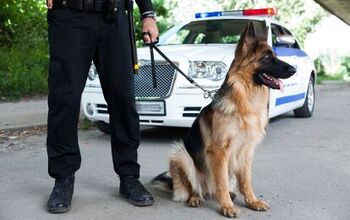Routine is important to our lives – so it’s no surprise to learn that it’s also vital to our dogs’ well being. Here’s why you should incorporate routine in your dog’s life.
We’re all creatures of habit. We get up at the same time each morning, will typically take the same route into work (ever found yourself going into auto-pilot?) and block time each day for exercise (ahem) or to settle in to watch our favorite Netflix shows at night.
Routines provide structure and a sense of calm in our day-to-day lives and that’s why it should come as no surprise that our pets crave that same type of ritual. For a dog, having an established routine reaffirms to him that his primary needs (food, water and shelter) will be readily available whenever he needs them. Simply knowing these needs are satisfied can help prevent him from going into “survival” mode – in other words, mooching, raiding the garbage or scarfing down the cat’s food – just in case his source of sustenance is suddenly cut off.
In fact, for many dogs the inability to anticipate he will receive regular meals or opportunities for outdoor exercise or even be able to respond to his owner’s expectations (fear of punishment) can become a source of constant stress for him. This anxiety seems to be innate – in other words no matter how well you treat your dog, without the positive reinforcement that comes from a regular routine, these fears can still surface and result in him acting out in ways that can include incessant barking, being irritable or snappish, constantly begging for hand-outs, piddling on the floors or even becoming physically ill.
Related: 5 Ways to Manage Dog Stress
What to do? It’s clear that whether you have just adopted a new puppy or you’re enjoying the companionship or a more seasoned pooch, getting them into a fairly rigid routine that works for you both, is what will ultimately be key to having a harmonious relationship.
And you may be surprised to learn that setting up an effective routine – one that not only helps provide your dog with a sense of stability but you with the confidence that he’s going to remain well-behaved even if you aren’t around during the day – really isn’t all that difficult. In fact, there are a number of opportunities for you to influence your pet’s behavior simply by introducing some simple yet consistent practices to your every day routine. Here are just a few for you to choose from:
Regular Meal Times
Okay, this one really isn’t optional. Feeding your dog at the same time each morning and evening is an important part of his day and something he really looks forward to. Think about the last time you had a food craving and just couldn’t wait to dive into that special dish. Every meal time is like that for your dog and when you change it up or decide to feed him later, it becomes a cause for concern in his eyes. Did you forget him? Are you still planning to feed him? Are you punishing him? Establish a set time for each meal and do everything in your power to stick to it. For those who free-feed their dog (leave food out all day) a structured meal time can help reinforce positive behaviors and also help keep that excess weight off… just something to consider. This set meal routine is also a great jumping-off point for the creation of other routines such as:
Strategic Potty Breaks
If you regularly walk your dog first thing in the morning, shortly after he has been fed and / or just before you settle in for the night, he is likely starting to learn that he can hold off on doing his “business” until this special time. And because he can anticipate this outdoor time is going to be happening throughout the day, he doesn’t stress about it – he knows that relief will be coming his way shortly. Without having an established potty-break routine, your dog loses the ability to anticipate when he might be able to do his business and is more likely to respond to the urge to relieve himself whenever the mood strikes.
Related: Why Exercise is a Gift of Love to Your Dog
Exercise He Can Expect
Few dog breeds are inactive or flat out hate the idea of exercise. In fact, even those dogs that don’t fancy getting up off the sofa will still appreciate the mental stimulation that comes from a good walk around the neighborhood. Remember, it’s not just about giving your dog a piddle-break but about his need to let off steam, stretch his legs and go for a run or brisk stroll with his human pack leader – you. Scheduling a walk or two each day with your dog not only keeps him (and you) fit, but helps prevent him from becoming bored and destructive. And it also gives him something he can anticipate and look forward to. Want to change-up a ho-hum walk? Why not tackle his natural instincts with a few interactive games in the backyard – throw a ball for a retriever, go for a run with a terrier or toss a frisbee for a border collie.
Anticipating Rewards Can Keep Grooming Fun
Brushing my dogs is not their favorite past-time however we tend to visit off-leash parks where overgrowth abounds and they end up with burrs and tangles in their long ears and curly coats. And while they have been treated for them, I’m always on the look out for ticks and other parasites they may have brought home on them. This quick inspection and grooming is completed after each walk and we’ve found a way to make it a little more fun (because they’re not lovin’ it). Now, as soon as we’re finished, they are rewarded with a treat for being cooperative. This small gesture, repeated after each comb-out has turned the grooming routine into something they expect and are a little more willing to accept.
Let’s face it, not all routines are going to be something your pup enjoys however they may be necessary (crating, vet visits, baths) and its up to you to alter the outcome by creating a more positive expectation. Which leads me to…
Related: Fear Free Veterinary Strategies
Dispensing of the All-Important Treat
We all know that treats, chews and biscuits should never become part of your dog’s routine diet any more than chocolate and ice cream should become part of ours. So be careful not to establish this type of expectation by randomly offering them goodies without a good reason. Only dole out their fave treats for stellar behavior and ensure your pooch understands the importance of earning this treat. It can be as simple as the aforementioned grooming or simply sitting on command, not barking at a passing dog or even just performing a basic trick (give-a-paw). The end result is that he knows he can anticipate receiving a reward based on certain behaviors and that the treat jar isn’t just an extension of his food dish.
Much Needed Down Time
Just like our own lives, not all of your pup’s routine is about timing and scheduling – sometimes its about consistency. That’s why having a regular, protected space away from the hustle and bustle of daily life is important for your pet. Whether your dog is a young pup or an old codger, he’s going to appreciate some quiet time if the house is full of young kids, strangers or simply a change in energy (think Christmas, summer holidays, etc.). Having a dedicated spot where he knows he can escape can be the difference between a calm, cooperative dog and a stressed, snappish one. His secret hideaway could be a crate, a closet, a quiet place in the basement or his own special bed. Simply providing your pet with a familiar place he considers his own and that he can regularly retreat to (or be retreated to) will help him work through the daily distractions of a busy household.
Related: Why You Should Take Your Kids to Dog Training Classes
More Effective Training
There’s no better way to get the best out of your dog than by taking a consistent, routine approach to training. By providing him with simple commands that he can accomplish and then acknowledging him with a reward of your choice (treats, pats or praise) you’re establishing a positive routine and setting expectations that he can comprehend and respond to. The key here, is consistency of command so that you don’t confuse and confound your pooch. Now the best way to achieve consistency is to ensure that not only are all members of the family using the same commands and recognition for a job well done, but that those who interact with him on a regular basis (sitters, walkers, trainers, groomers) are doing likewise.
Establishing any routine with your pet requires time and patience but the rewards will be worth it. As you want and expect regular feedback from your superiors, so does he. And when he’s done a good job, he knows it!
























